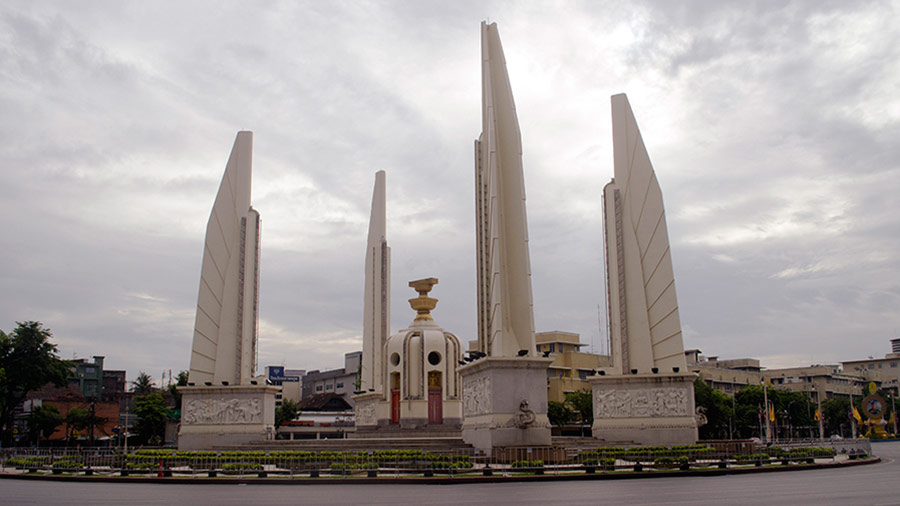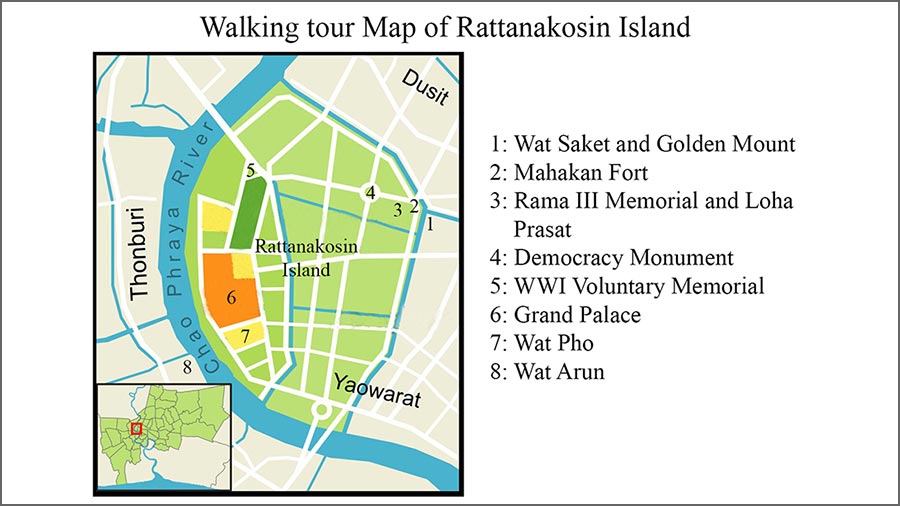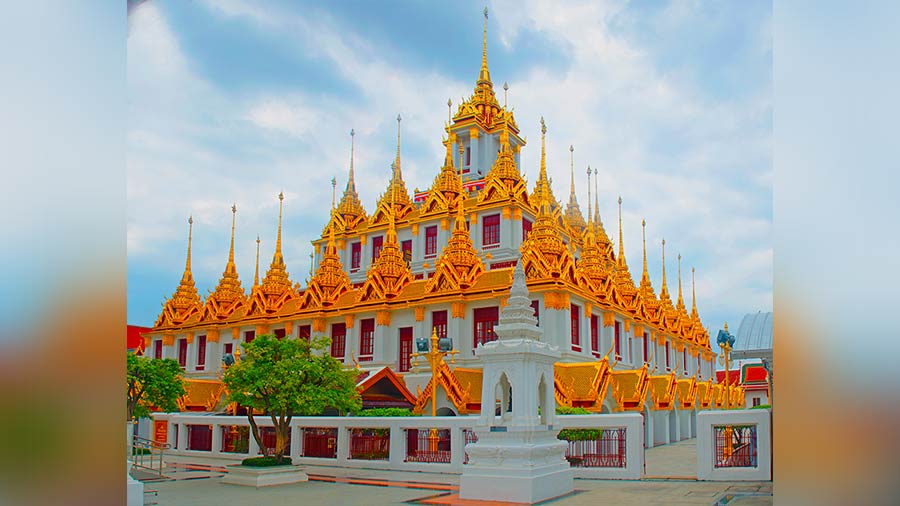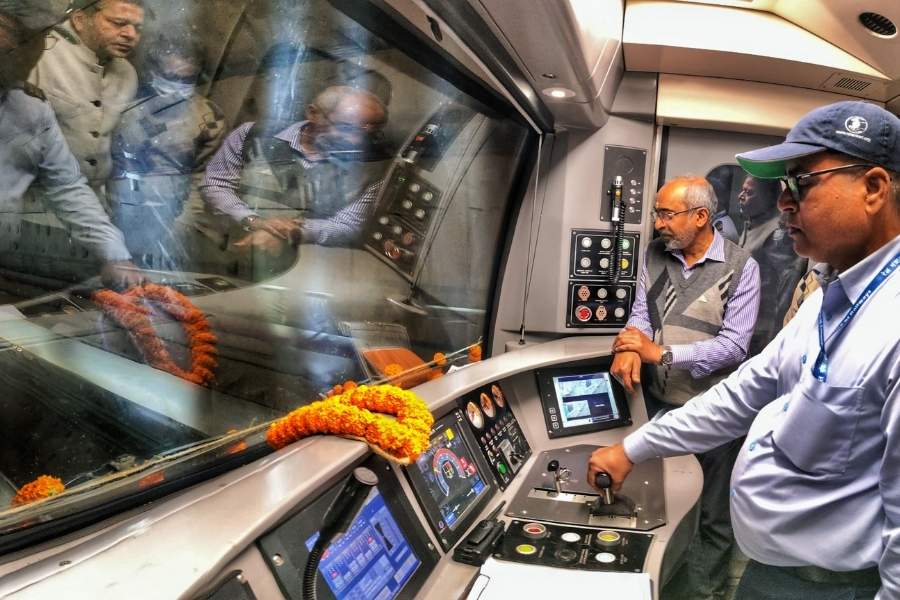
Rattanakosin, literally meaning 'the treasure trove of jewels', is located in the heart of Bangkok and has a rich share of historical monuments including the Royal Palace and the Temple of Reclining Buddha. It is an island bordered on the west by the Chao Phraya River. On the other three sides a series of canals separates the Rattanakosin area from the rest of Bangkok. These canals once served as moats protecting the royal territory of Bangkok. Above, Khlong Saen Saep Express Boat with the Golden Mount chedi (stupa) on the right
Rangan Datta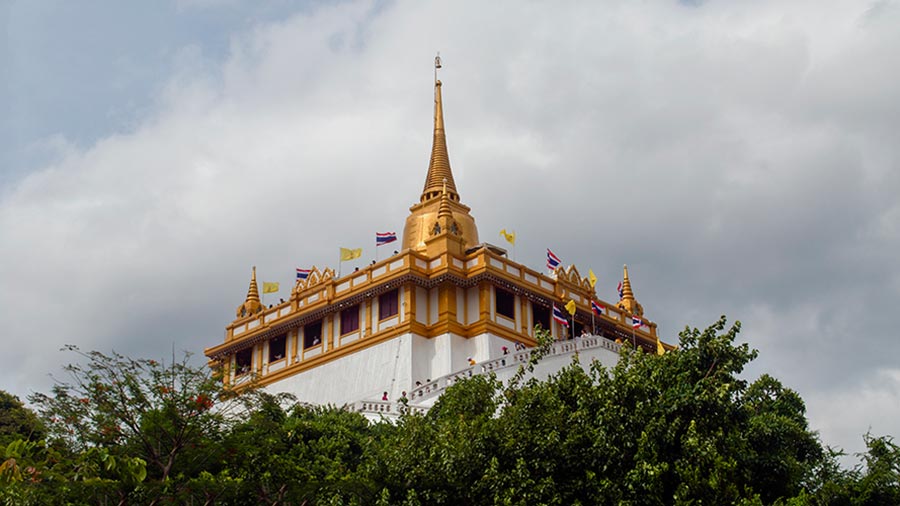
Today, several bridges span across the canals and the river, providing easy access to the island. But the best way of reaching the island is by a canal ferry. The Khlong Saen Saep Express Boat service connects Rattanakosin Island to tourist areas of Bangkok like Sukhumbit, Nana and Siam. It is quick and cheap and provides an interesting insight into the daily lives of the people of Bangkok. The ferry terminates at the Panfa Leelard pier, which marks the entry into Rattanakosin Island. Above, The chedi of Golden Mount
Rangan Datta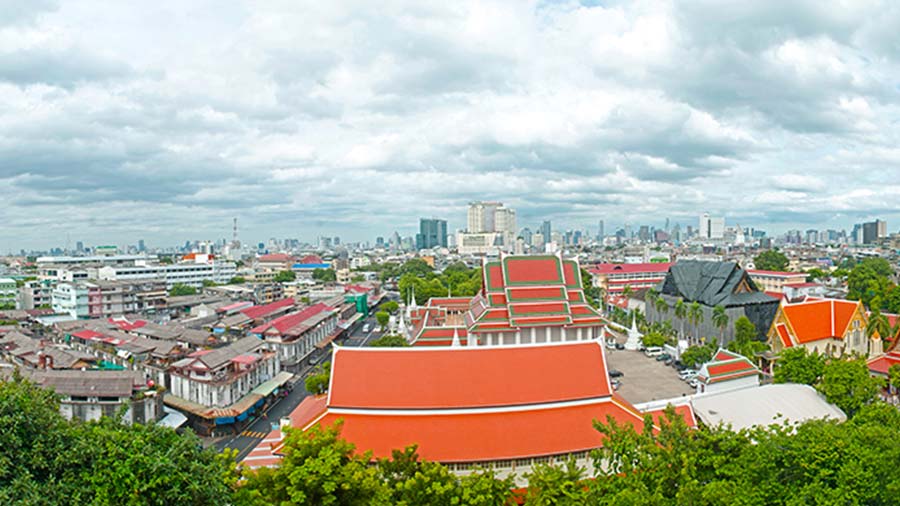
Wat Saket and Golden Mount: Technically located outside the Ratanakosin Island, the glittering golden chedi of the Golden Mount towers above the skyscraper-infested skyline of Bangkok. Located on an artificial hill, it provides a bird’s eye view of the surrounding area including that of Rattanakosin Island. A stairway leads to the top of the mound housing the small shrine crowned with the golden chedi. The chedi holds a relic of Lord Buddha. The complex also houses the Buddhist temple of Wat Saket, which predates the mound. Timings: 7.30am – 5.30pm. Entry: 50 Baht
Rangan Datta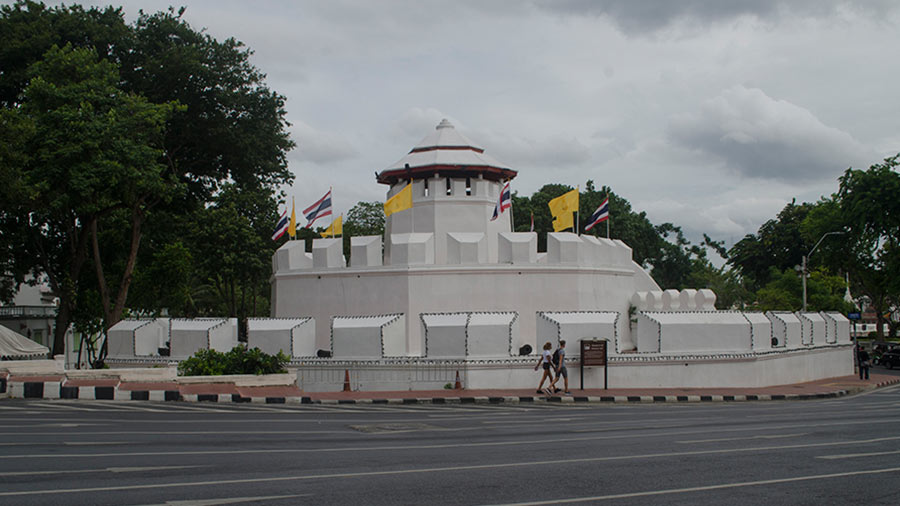
Mahakan Fort: Rama I (reign: 1782 – 1809) built a defensive wall along with 14 forts along the boundary of Rattanakosin Island. Today only two of these forts stand and Mahakan is one of them. It is located next to the ferry terminal that welcomes visitors to the Rattakosin Island. The polygonal fort has two sets of walls with battlement and is complete with a turret like structure. Cannons can be seen jutting out of the walls. Entry inside the fort is prohibited
Rangan Datta
Rama III Memorial and Loha Prasat: Next to the Mahakan Fort is the Memorial of Rama III (reign: 1824 – 51). The memorial consists of a huge seated statue of the king. The complex consists of several adjoining pavilions and manicured gardens. Behind the royal memorial towers is the Loha Prasat (iron palace), officially known as Wat Ratchanatdaram. Loha Prasat is unique and different from the thousands of temples that dot the Bangkok landscape. The seven-tiered structure rises to a height of 112 feet and is topped with 37 mandap-style spires. The number 37 represents the 37 virtues that are required to reach enlightenment. Timings: 9am – 6pm. Entry: Free but a donation is recommended
Rangan Datta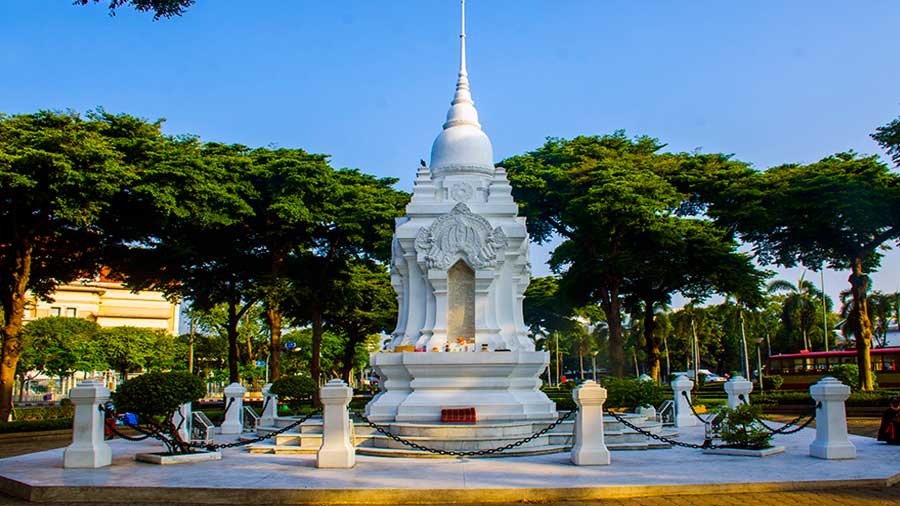
World War I Voluntary Memorial: Located west of the Democracy Monument and north of the Sanam Luang, a grassy open space. World War I Voluntary Memorial is built in memory of the 19 fallen soldiers of the Kingdom of Siam (now Thailand) who died in the battlefields of France and Germany during World War I
Rangan Datta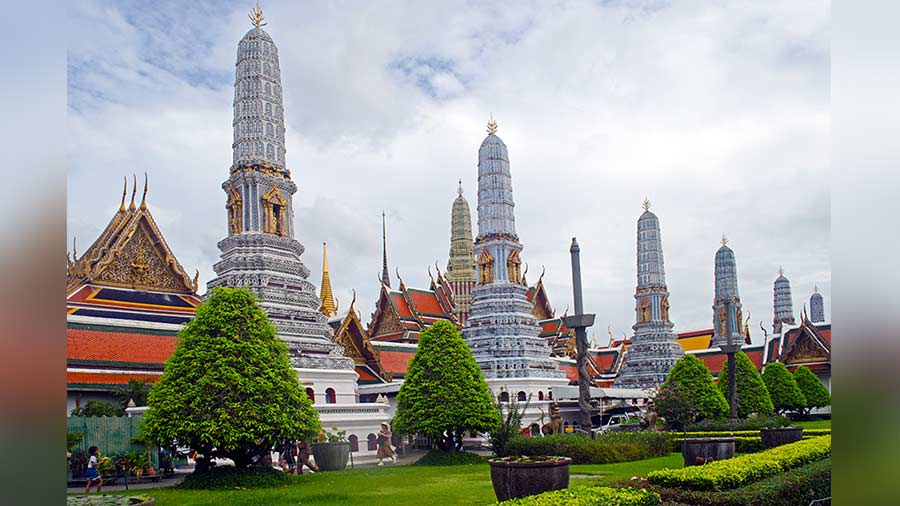
Grand Palace: The former royal residence, Grand Palace, is the star attraction of Bangkok. It houses the temple of Emerald Buddha. The palace dates back to the time of Rama I (reign: 1782 – 1809) but has been modified and extended several times. The complex consists of several temples, towering chedis and royal halls. It offers an interesting mix of both traditional Thai and European architecture. Timings: 9am – 3.30pm. Entry: 500 Bhat
Rangan Datta
Wat Pho: Wat Pho is popularly known as the temple of reclining Buddha and is located south of the Grand Palace. It is the largest reclining Buddha image in Thailand and possibly the largest in the world. The reclining Buddha is not the only attraction of Wat Pho. It is home to more than one thousand Buddha images, more than any other temple in Thailand. Time: 8:00 am – 6:30 pm. Entry: 100 Bhat
Wikipedia
Wat Arun: This is located on the other side of the river and hence, outside the island of Rattanakosin. Known as the temple of the dawn, it is named after the Hindu sun god. The temple is known for its elaborately decorated towering chedi, which dominates the Bangkok skyline. Ferries are available (4 Bhat one way) and the towering, shining white chedi welcomes visitors inside the Wat Arun complex which apart from the chedi houses several other temples. The complex, spread over a large area, is complete with gardens and offers a grand view of the river and the Grand Palace area on the other side. Time: 8:00 am – 5:30 pm. Entry: Free but 50 baht for the first tier of the chedi
Rangan Datta